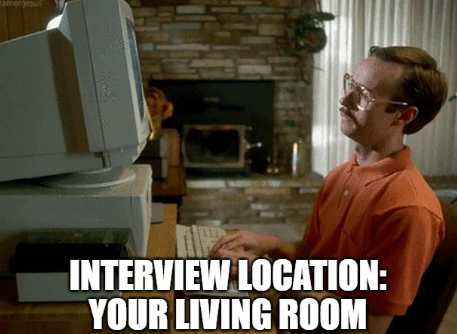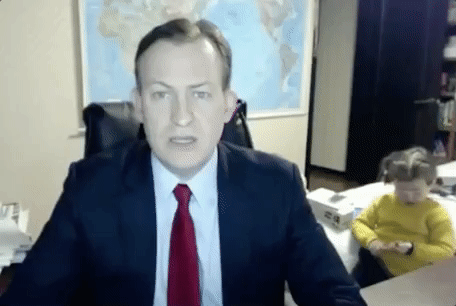Get in touch. Promise we won’t bite.
Contact usor feel free to connect:
by Aisling on May 1, 2020
A couple of months ago, when the news first broke about the Coronavirus, it’s quite likely that none of us thought it would have an impact on us. These things always happen somewhere else, and to other people.
Fast forward to today, we’re looking at retired healthcare professionals volunteering to go back to work to help those in need, businesses small and large have been hit badly, and some have had to close for the foreseeable future.
We’re now that place, and those people. However, what’s been evident is that people are truly working together (from a distance) as much as possible to try to get through this together.
The tech industry is in a position that others may not be. Some companies are continuing to hire as normal, and have moved everything online while we navigate this current environment we find ourselves in. Others are taking a step back to see what the coming weeks bring us.
While we will remain optimistic that we will all come through this and emerge at the other end, having a new appreciation for the things we may have taken for granted before, we also know that things will change for a while. With that, we feel that the best thing we can do is prepare for those changes and take a look at how we can ensure that remote hiring practices are run like a tight ship.
We’re in the business of helping businesses grow, and helping people reach their career goals. From all of our own personal experiences, we have seen many different types of interviews and interview processes, and can certainly say that there is no one way to do anything. Processes can be adapted and tailored as much as they need to be.
With all of that said, we want to offer some guidance to businesses who want to keep the wheels in motion as much as possible. We thought that putting together a two-part blog to offer some advice on remote hiring and remote onboarding, might be helpful for some companies who are unsure of what to do right now. There’s no right or wrong here, but we hope that you find this helpful!
We’re going to start with the hiring process.
Usually, a hiring process might consist of three or four interviews, with at least one of those being in person. The in-person interview is important, so that any potential new employee gets to see the office, meet a few people on the team, and get that human connection – “These are the people who I will work with”.
So, how do you have an effective interview process if you have to eliminate that in-person meeting? Well there are a few things we can look at, which we have broken down into sections;
Things shouldn’t change drastically here. Yes, there are a lot of things impacting businesses at the moment, but if you are in a position where you can continue to hire, you should be able to keep a constant flow of communication with the person you are interviewing.
This is important. Given the situation, people feel uncertain about a lot of things, and waiting a week to hear about how they did in their interview might make them feel less secure. This is an opportunity to give someone in need of a job a positive experience so, as a first rule of thumb; keep the channels of communication open and free flowing.
Some alternatives to just using email and the phone (which we do recommend, of course) are creating a private “Interview” Slack channel, where you can invite people to speak to different people on the team. You could do this at any stage during the process, but if you know you want to make someone an offer, include a link to the Slack channel with the offer letter so that they can ask the team any questions that are top of mind!
Tools like Greenhouse and Workable are also great to keep track of all communication, so that everything is tracked and nobody falls through the cracks! (Don’t let people fall through the cracks, it’s not a nice feeling).
This one might seem obvious, but it’s still worth mentioning.
What’s the environment like where you will be conducting the interview? Are there windows that people will walk past? Is there the possibility of someone walking into the room?
Eliminating all potential distractions is important, not just for you, but for the person who is on the other side of the video call. If you are distracted, the person you are interviewing will feel it. They may feel that you can’t hear what they are saying, or that you are more concerned by what’s around you. It’s not a good feeling.
To prevent this from happening, let those around you know that you’ll be doing an interview at a certain time (you could pop a sign on the door explaining that an interview is in process maybe). While you can’t necessarily prevent pets or children from wandering in (although, it’s a known fact that seeing pets during interviews can put both parties at ease!), the more you do to try eliminate distractions the smoother the interview will go!
The T word 🙂
Again, this one might seem like Captain Obvious, but making sure that you have adequate equipment and the right technology to conduct remote interviews is, of course, paramount to it being a successful process for you.
At a basic level, you should ensure that you have a camera that works (and isn’t fuzzy – it’s difficult to interview with people when you can’t really see them) and good quality sound.
There is the possibility that you may experience a lag with video calls (it happens all too frequently) but this is where being a human comes into play. If you try to make the person you are interviewing feel relaxed, and try to get to know them personally as opposed to just another potential hire, it allows for a much more open conversation where it’s easier to navigate through potential technical issues. You don’t want to end up talking over each other awkwardly, so having that human connection means you can move through those issues if they arise.
Small, but mighty.
If you get to the point where you have built out and successfully completed your interview process, and want to offer someone a job, that’s great! Remember that people may still have questions, or things that they are unsure of, so instead of catching up over a coffee be available on the phone/ email/ Slack to remove any doubt for them and make it as carefree an experience as possible.
This could include explaining a benefits package to someone, explaining how equity works in detail, or how a person gets paid. Remove the obstacle to ensure that the person joining you has absolutely no doubts about how great an opportunity it is!
A lot of these things might seem obvious to some, but they might not be obvious to all. We want to help you keep things moving as best as we can, so will always be available to talk if you need us. No, this doesn’t mean you are obligated to give us your jobs, it means that we are doing our jobs in helping you move forward during this time, and that you can reach out to us to ask for advice if you need to. (This also applies to people looking for a job and are feeling uncertain about things right now. We’re here for you too!).
Next week, we will be back with part 2. For this one we are connecting with some companies who already implement these practices, and some people who have gone through them, to be able to offer you the best advice that we can. We will also have something coming for those of you who are interviewing, and going through these processes right now. Stay tuned!


